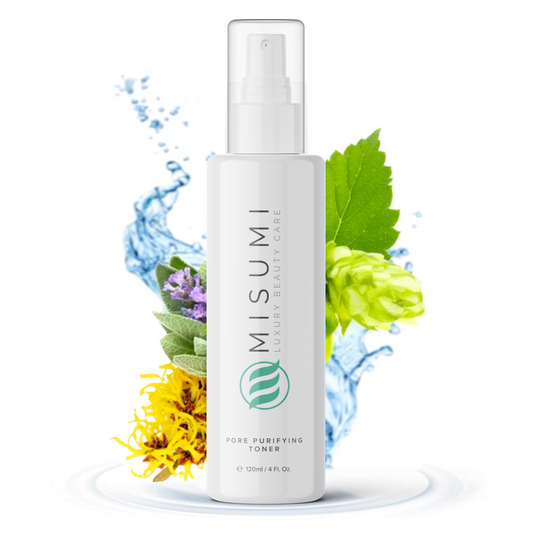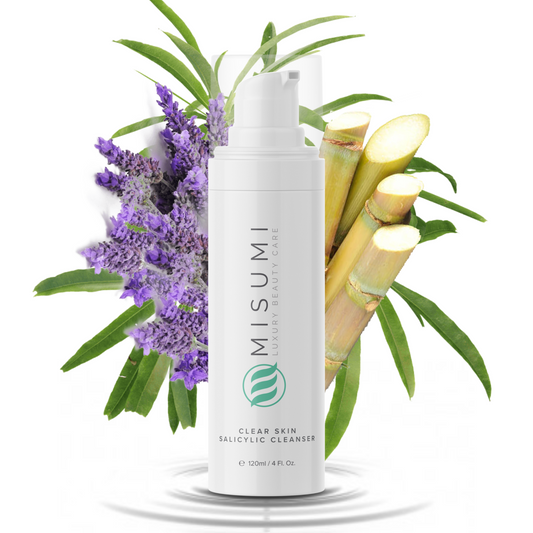Acne is a particularly annoying skin condition because it requires constant skin care rituals. However, the most powerful negative effects of acne are psychological. Acne changes the appearance of a person and can lead to a lot of self-esteem problems. What worsens matters is the formation of acne scabs, which often become scars. And severe scars can sometimes last a lifetime.
According to the American Academy of Dermatology, 85% of people between 12 and 24 experience acne. Acne can occur at any stage of life, even in your 30s or 40s. The frequency of acne among adults is increasing, especially among women - nearly 15% of adult women deal with acne every month. If this is the case, your acne might be trying to tell you that your hormones are out of whack. Most adult acne is, in fact, hormonal acne.
Chances are that, yes, you will experience acne at some point - including acne scabs. But thankfully, there are dozens of ways you can deal with it.

OK, so What is an Acne Scab?
First things first - scabs are one of the body's many natural ways of healing itself. We've all seen what a scab looks like. It's a fairly gross-looking protective crust that forms over wounds.
Scabs are made out of dried blood and other fluids, including dried blood cells and immune cells. The purpose of any scab is to form a protective layer over the wound. So you should not, under any circumstances, try to pull off a scab by force. That will make the wound worse and cause inflammation. Plus, this messes up the skin's healing process, increasing your chances of turning that wound into a scar.
This even more important when dealing with acne scabs. Acne forms due to many reasons, often because of inflammation. Unless your acne is purely hormonal, chances are that there is a bacterial infection roaming about your skin too. Removing the scab will expose the crater your pimple made and invite in even more bacteria. This is why we recommend you avoid touching your scab as it's healing, too.
Additionally, peeling off a scab can cause a lot of bleeding and further structural damage to your already damaged skin. Instead of letting your skin take its time and heal naturally, you're poking new tears in it. You may even end up with scars all over your face.

The Proper Way to Treat Acne Scabs
The trick is to leave the scab alone. We want the body to do its magic and close our acne wounds unimpeded. The key is to keep acne scabs clean and moisturized, and many topical treatments can help you do that.
Cleansing the Scab with Skin Care Products
Hygiene is important - but it's twice as important when you want to get rid of pimples and pimple scabs. Ideally, you should wash your face - or the affected area - twice daily. But you'll have to be gentle and avoid damaging the scabs.
You'll need gentle facial cleansers and acne cleansers. Apply some on a clean cloth and rub gently. Never use the same cloth twice since that can spread bacteria.
Use Oils to Moisturize the Scab
After you've washed your face, moisturize your skin with oil, especially if you've used a dry soap. From vitamin E oil to coconut oil, shea butter, castor oil, argan oil, almond oil, olive oil, and even emu oil, nearly all oils can improve the elasticity and moisture of your skin.
But be careful when applying oil - too much will make your skin oily. Just dab a little on the acne scab, and that's it. If small pieces of the scab fall off, let them. Remember, don't use force. For more info on oily skin, go here.

Moisturize and Soothe Acne Scabs With a Warm Compress
It's important to keep your scab moisturized during the healing process. Soak a clean cloth in warm water and then squeeze. Touch the warm compress to the pimple scab and hold it for 10-15 minutes.
It's good to do this twice a day - just make sure you've washed your face first. The warmth and the water vapor will soften the scab, make dead skin cells fall off more easily, and help the wound to heal.
Using a Compress Made of Plantain Leaves
These leaves are easily confused with the banana-like fruit of the same name, but the differences are in shape and function. Plantain leaves (scientific name Plantago major) is a green plant native to Europe, North America, and Asia. It has a long history of being used as a medicine, especially for skin conditions. Chances are you have plantain leaves growing in your backyard, but if you're not that lucky, you can surely find some in the wilderness or at the local market. Alternatively, you can use a skin care product that contains plantain.
Once you have acquired some fresh plantain leaves, take 10 of them and put them in a pan containing around 1 inch of water. Boil them slowly until you notice they have become soft. Then, mash them into a paste. After the paste has cooled off, add some oil to make it more pleasant and moisturizing. Finally, apply the plantain paste on the pimple scabs, and protect them using a bandaid or gauze.
You can leave it overnight and rinse it off in the morning. If the pimple scab is on your face, doing this method for 15 minutes and several times a day is enough. Since it has healing properties, the plantain paste should soothe the pimple scab without harming the skin.

Aloe Vera for Acne Scabs
Ah, our good old friend, the magical aloe vera. So many studies and research have proven its effectiveness in wound healing.
Many treatment options contain it, from antibacterial wipes to cleansers. But if you can't find any skincare or acne-care products containing this ingredient, the plant will do.
Just cut off a small piece of the plant and squeeze some of its juice over the pimple scab. Don't touch it, and leave it to dry. You can repeat this procedure several times to soothe and reduce inflammation. After that, rinse your face gently.
Aloe vera products also work as an acne treatment for future breakouts, especially when combined with tea tree oil.
Garlic and Onion Juice For Healing Acne Scabs
You can find this in almost every well-stocked supermarket. But be careful since these ingredients can irritate your skin. Vegetables are super healthy for your skin, and garlic and onion are just a small part of it.
Apply several drops of garlic or onion juice to a Q-tip. Then, gently rub the Q-tip over the pimple scabs and let them dry. If you find the smell unbearable, rinse your face off. This can be repeated several times a day. Onion and garlic are known to contain antifungal, anti-bacterial, and other ingredients within them to help quicken the healing process and get rid of pimple scabs for good.

Honey Can Help Remove Acne Scabs
Open a history book, and we guarantee the word honey will be found somewhere among the first pages. That's because honey is objectively awesome and has been used since ancient times to prevent infection and soothe wounds.
As with the garlic juice above, you can use a Q-tip or a cotton pad to apply honey to your pimple scabs. Around half of a tablespoon should be more than enough honey for all affected areas. Leave it on the skin for half an hour. Because honey is sticky, cover it with gauze or a bandaid. Then, wash it off gently using warm water. Honey will also keep your skin moisturized, so it's a win-win.
DIY Calendula Oil Balm for Acne Scabs
Calendula has some awesome healing properties and has been used in folk medicine for thousands of years.

Calendula oil is a must, but you will need another oil to act as a carrier for this balm. Almond, castor, mineral, or olive oil will do. If you're not averse to the paste-like texture of coconut oil, you can try mixing calendula oil with it as well.
Add 3-5 drops of calendula oil to the carrier oil and then apply it topically to the scabs with a cotton ball or Q-tip. There's no need to rinse it off, and you can repeat it several times a day.
Acne Scabs Also Hate Apple Cider Vinegar
This is because apple cider vinegar has powerful antibacterial, antifungal, and antiviral properties. On top of that, it promotes skin cell growth. However, it can be irritating, so you should be careful when applying it.
Here's a safe way. Take 50mL of clean water and add up to 5mL of apple cider vinegar. That's approximately a 10:1 ratio. Dab a Q-tip or a cotton pad into the mixture and then apply it carefully over the scabs. Rinse it off gently after 15 to 20 minutes or so.
Summing It Up
Scabs protect your body and prevent the formation of scars. There are safe ways to clean, soothe, and help our skin heal. From honey to warm compresses, we can be our body's ally. Remember, whatever you do, don't tear off an acne scab! Avoid popping pimples while you're at it, as this can cause scarring.
Avoid acne scars and scabs in the first place by investing in good acne treatments. Comprised of a gentle cleanser, toner, and moisturizer, the Complete Clear 3-Step System will help you control breakouts and get the clear skin you've always wanted.
Scabbing is natural, but if you're concerned about your pimples or pimple scabs, see a healthcare provider.
References
Skin Conditions by the Numbers
Acne Scarring—Pathogenesis, Evaluation, and Treatment Options
Honey in dermatology and skin care: a review
The Effect of Aloe Vera Clinical Trials on Prevention and Healing of Skin Wound









